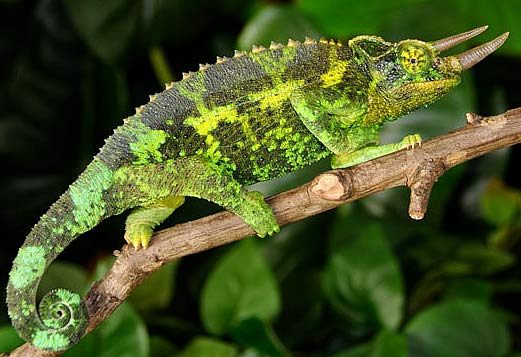Jackson’s Chameleon – The Lizard that Has It All
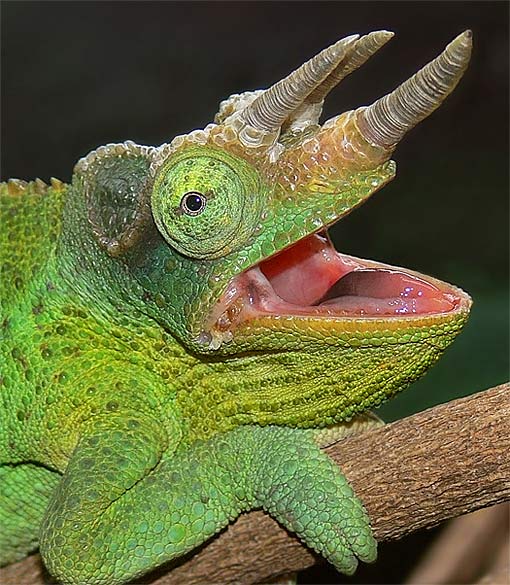
Jackson’s chameleon, a reptile from the African countries of Kenya,Tanzania, Uganda, and Mozambique, possesses possibly the best horns of the reptile kingdom. The three giant horns, one from the snout and two above the eyes, are well-formed and highly impressive. The snout horn bends slightly upward. The chameleon also possesses a helmet lump at the back of the head. Observers frequently mention the lizard’s resemblance to the long-dead dinosaur: the triceratops. These nice horns are reserved unfortunately for the males only. The purpose of the horns is subject to some debate. Some believe they help the males attract females and to deter enemies. Others have reported that the males wield their horns to joust with rivals and knock them off branches.

Apart from its original homeland the well-horned reptile has colonized (with help from humans) the Hawaiian islands. A few dozen individuals were released into the wild in 1972 and since then they have expanded to territories on Oahu, Maui, Hawaii, and Kauai. The climate there, with its rain and tropical forest, is something very similar to their former African habitat and is pleasing to the chameleons.
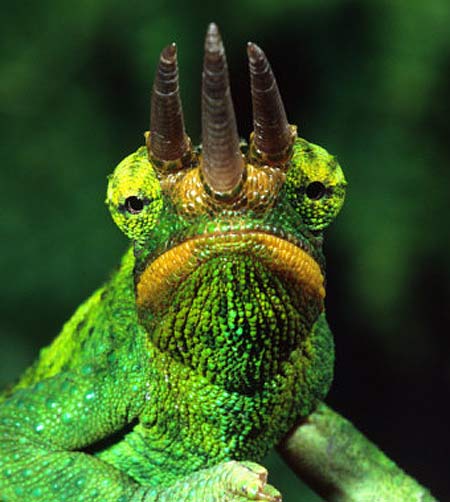
The exact color of Jackson’s chameleon is a little different depending on the subspecies but they are all shades of green: bright green, lime green, olive green, or yellowish green. This green though will change quickly to brown or black (or a mix of colors) and expose bands or irregular spots if the lizard is stimulated or stressed out. In the morning they utilize darker shades to better absorb the sunlight. Most of the time it is pretty hard to distinguish from them from the lichen on the trees. Young lizards are colored tan or light gray.
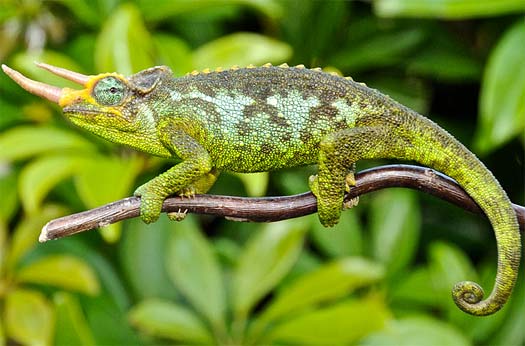
Besides the horns and helmet, these chameleons have a spiny crest that runs down their backs. Like other chameleons, they possess projecting, independently operating eyes, awesome pincer toes, an awesome prehensile tail that coils up, and a wicked projectile tongue. It is almost as if the lizard was designed to include all the coolest features that could be combined in a lizard. However, the lizard is known to be pretty slow-moving and is not thought to be very clever. Oh well, you can’t have it all.
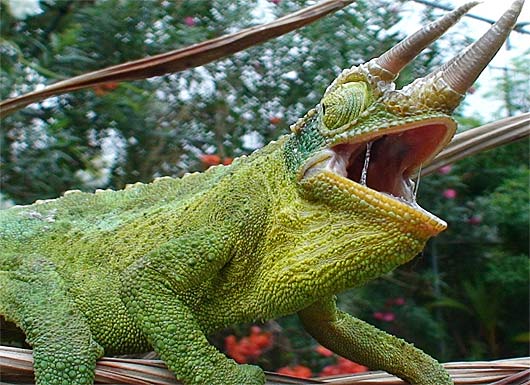
On top of all that physical razzle-dazzle, it also has its own special mating ritual. When two rival males meet, the highly territorial animals stage a dramatic showdown. They turn sideways, puff up their body to appear more imposing, and then curl their tail. Usually, their skin colors brighten as they thrust their head forward, sway and bob, and raise up their front legs. Some males open their mouth to show off the bright inner colors and hiss. Then the clash of the mighty horns begins. If a fighter is physically injured during a joust or decides to retreat, the victorious male will turn his impressive display toward an available female. If the female is not ready to mate, she responds with her own threatening gestures. If the female is relatively immobile and makes little or no gestures, this signals to the male her willingness to mate and the male will then proceed to mating business. After 190 days, the female gives birth to as many as 40 living young, each emerging from a sticky, glass-like amniotic sac on the branch where it has been deposited. Newborns, just like the adults, eat a healthy lizard diet of insects, caterpillars, slugs, snails, and earthworms. When full-grown, individuals usually measure 10 to 13.75 inches (25 to 35 cm).
